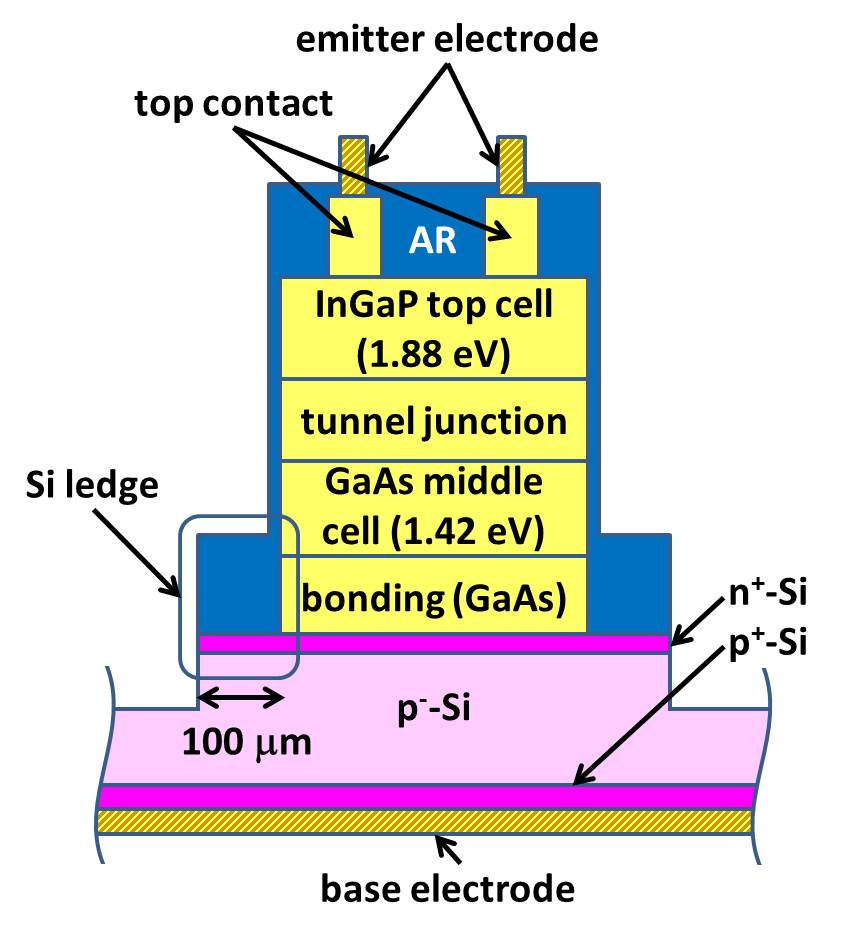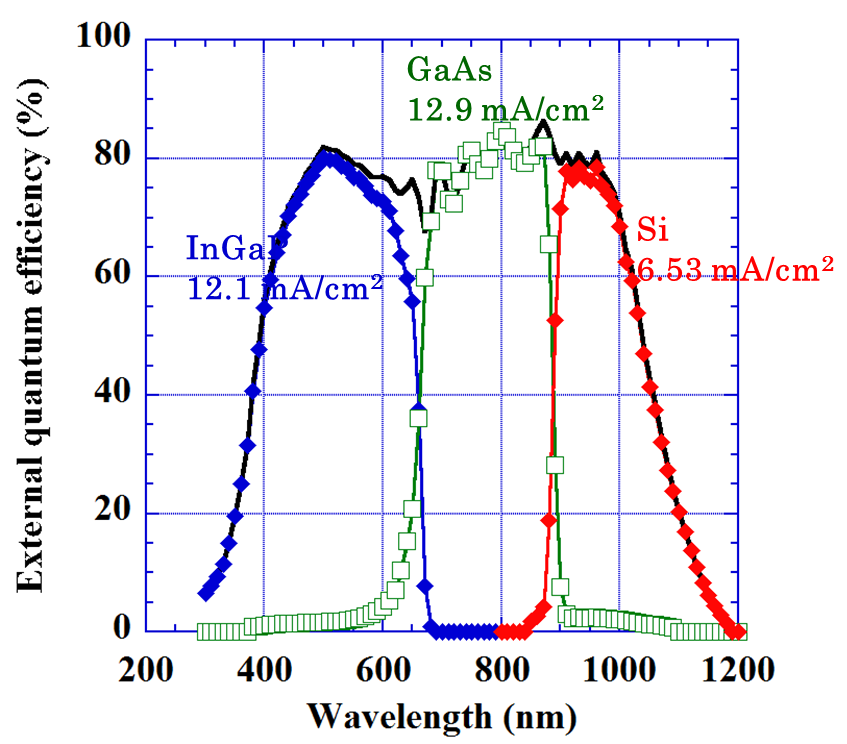III-V-on-Si tandem solar cells, in which sub cells made of compound semiconductors (III-V materials) are placed on those of Si, are most promising so as to realize high-efficiency and low-cost photovoltaics. Given that higher efficiencies are likely to be obtained in tandem cells made of a larger number of subcells, we fabricated and characterized InGaP/GaAs/Si triple-junction cells on the basis of our preparatory study for InGaP/Si double-junction cells. The cross section of triple-junction cells is schematically shown below (left panel). Note that in a simple view the solar irradiance with wavelength shorter than the absorption edge of InGaP (λ<λInGaP (660 nm)) is absorbed in the InGaP-based top cells and generates photocurrents in this cell. The solar irradiance with λlonger than the absorption edge of InGaP and shorter than the absorption edge of GaAs (λInGaP<λ<λGaAs (870 nm)) passes through the InGaP cells, is absorbed in the GaAs middle cells, and generates photocurrents in the middle cells. The irradiance with λsuch as λGaAs<λ<λSi (1110 nm) is absorbed in the Si bottom cells and generates photocurent in the bottom cells. We employed hybrid approach (surface activated bonding (SAB)) for fabricating the triple-junction cells.
 |
 |
| Schematic cross section of triple-junction cells. |
External-quantum-efficiency spectrum of triple-junction cells. |
(Result)
The lattice-matched InGaP/GaAs double-junction-cell structures that were grown on GaAs substrates in the reverse order were attached to Si bottom-cell structures by SAB. The triple-junction cells were fabricated using similar process sequences to those applied for fabricating InGaP/Si double-junction cells.
We characterized a 5×5 mm2 triple-junction cell. Its conversion efficiency under the conditions of an air mass of 1.5G and one sun was estimated to be ≈ 26% after subtracting the contributions of Si ledges and shadow loss. We also measured the spectral response of this cell. The obtained external quantum efficiency is shown above (right panel). Contributions of each subcell is separately observed. The photocurrent that should be generated under the conditions of an air mass of 1.5G and one sun in each subcell is also shown. We find that the photocurrent in the Si bottom cell is lower than those in the top and middle cells, which means that the response of the Si subcells for long-wavelength irradiance (λGaAs<λ) should be increased for improving the conversion efficiency towards the detailed-balance-limit value (35%).
(Note) InGaP/GaAs double-junction-cell structures for this work were provided from Sharp Corporation.